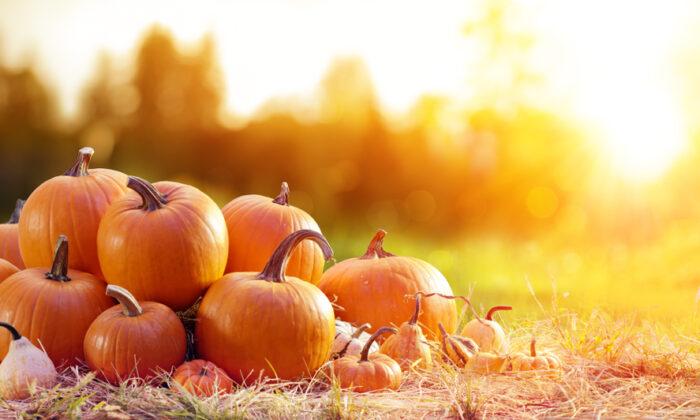Q: My pumpkins have turned orange, and it is still two months until Halloween. What do I do now?
A: If the last few inches of the stem next to the pumpkin have turned brown, it is best to harvest it. If it is still green, leave it in the garden. If you harvest it, it should be kept in a cool location until you need it. If it is kept in a temperature in the 50s, it will last almost all winter, so two months is no problem. The warmer it is kept the shorter it will last.
If it will be left in the garden, you should protect it from raiding animals. As it ripens, many animals, from squirrels to raccoons to plain old mice, will want to eat some of it. Protecting it with a cage of chicken wire or other fencing will work best. Protect it from rotting on the bottom by lifting it and sliding a board underneath.
Next year, read the pumpkin seed package, and see how many days it takes to grow from planting to harvest. Then plant them appropriately. In this case, maybe two months later is better.

Q: My cherry tomatoes have been fine all summer, but now they are splitting apart while still on the vine. What am I doing wrong?
A: You are letting it rain on them, or you are overwatering them. Tomatoes grow to a certain size depending on how much water the plant has available. If there are many tomatoes all ripening at once, each one gets a limited supply. If there is a sudden input of lots more water, each fruit gets more water. The skin of the fruit has a limited ability to stretch, so it cracks.
Tomato plants are heavy drinkers of water, so do not let them dry out during dry spells. That way, the fruit will grow to its full size. Drip irrigation lines work well to water them all the time. A milk jug with a hole poked in it will let out water for a long period of time.
Q: I have Stella De Oro daylilies. Can I propagate them through seeds?
A: Yes, you can, but you will not get Stella De Oro daylilies as a result. You will get a new kind of daylily. Almost all daylilies, except the original yellow-orange flowered ones, are hybrids created by crossings. If you propagate a daylily (or any other kind of plant) through division of the roots or by cuttings, you have a clone. The clone will be the same kind of plant.
If you want more of any kind of daylily, you can do so through division rather easily. Wait until the leaves start yellowing in the fall or in early spring, before the new growth gets very tall. Simply dig up a clump, and wash off the roots. Then untangle them, and cut them apart. Replant as soon as you can. The larger the clump the sooner it will flower.
If you want to try seeds, cut the anthers off one flower, and rub them on the pistil of another flower. Tie the petals shut, or cover the flower with a small bag and tie it closed. Eventually, the seedpod will dry and split open, revealing the seeds. They must be kept in a cold location such as a refrigerator for at least six weeks. Plant them in small pots, and keep them moist at around 70 degrees F. If you do this, they will germinate in three weeks to three months. It will take several more months to have a plant that can be planted outside.
Since Stella De Oro daylilies often develop seedpods on their own, go ahead and collect some in the fall to start the process. Or collect some seedpods, and leave them in a bag in the garage. Plant them next spring, and see if anything comes up. Either way, it will be at least another year before they bloom. You will get more blooming plants if you just divide existing clumps. It is often best for the health of the daylily clump to divide it every five years or so.
It will be interesting to see what comes up from seeds. Most new varieties of daylilies, and many other perennials, come from amateur plant breeders, so good luck.
Email questions to Jeff Rugg at [email protected]. To find out more about Jeff Rugg and read features by other Creators Syndicate writers and cartoonists, visit the Creators Syndicate website at Creators.com. Copyright 2020 Jeff Rugg. Distributed by Creators Syndicate.





